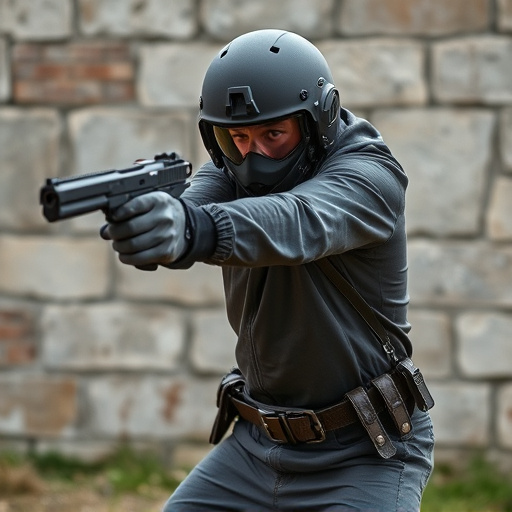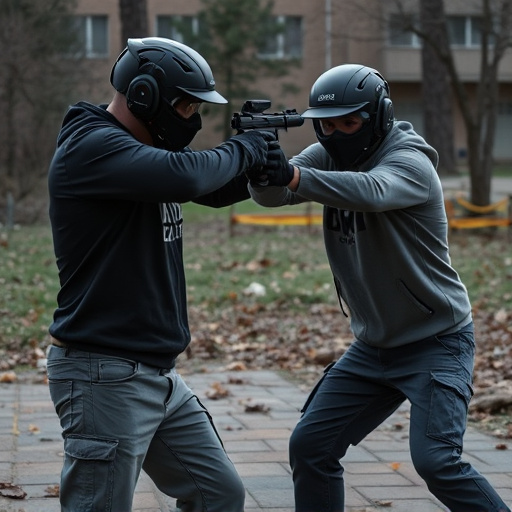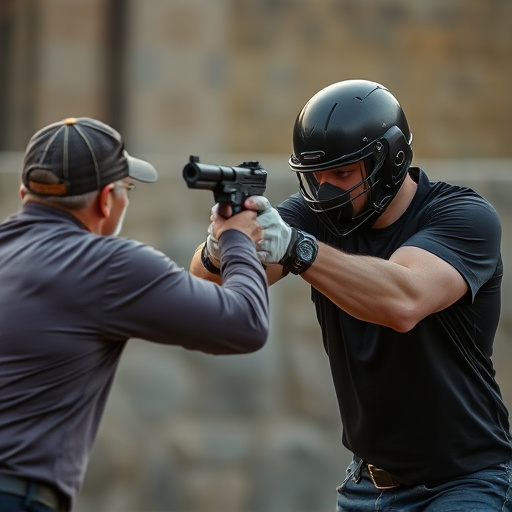Electrical shock weapons, or stun guns, are non-lethal self-defense tools that temporarily incapacitate targets with high voltage, low amperage currents. Amperage is key to their effectiveness; higher values deliver stronger shocks but require careful consideration to avoid harm. Affordable stun guns often balance power with cost using lower voltage batteries, targeting 50,000-100,000 amps for optimal defense. Reputable manufacturers offer compact, ergonomic designs with safety features and reliable performance for effective use in potentially threatening environments.
Electrical shock weapons, commonly known as stun guns, have gained popularity as personal defense tools. This article delves into the science behind these devices, focusing on amperage—a critical factor in their effectiveness. We’ll explore how amperage impacts stun gun performance and discuss various factors influencing its output. Additionally, we provide a guide to choosing affordable yet powerful stun guns for self-defense, ensuring you’re prepared without breaking the bank.
- Understanding Electrical Shock Weapons: A Brief Overview
- Amperage and Its Role in Stun Gun Effectiveness
- Factors Influencing Amperage Output in Stun Guns
- Choosing Affordable Yet Powerful Stun Guns for Self-Defense
Understanding Electrical Shock Weapons: A Brief Overview

Electrical shock weapons, often known as stun guns or Tasers, are non-lethal devices designed to incapacitate individuals through an electric current. These tools have gained popularity for self-defense purposes, offering a viable alternative to traditional firearms. Stun guns emit a powerful electrical pulse that disrupts the nervous system, causing temporary muscle paralysis and disorientation in the target. This brief but intense effect allows users to gain control of potentially dangerous situations without causing permanent harm.
In terms of functionality, stun guns operate on a simple yet effective principle. They typically use high voltage and low amperage to deliver a shock, ensuring minimal risk of severe injury. Many modern models are designed with safety features, making them user-friendly and affordable options for individuals seeking effective self-defense tools. With various styles and sizes available, including compact and concealable options, these devices can easily fit into everyday carry routines, providing peace of mind in potentially threatening environments.
Amperage and Its Role in Stun Gun Effectiveness

Amperage, measured in units of electricity flow or current, plays a critical role in determining the effectiveness of stun guns as affordable self-defense tools. The higher the amperage, the more powerful the shock delivered to an attacker. Stun guns operate by disrupting muscle control through electric current, causing temporary paralysis and disorientation. Amperage is thus a key factor in achieving this effect swiftly and effectively.
When considering affordable stun guns for self-defense, it’s essential to look at their amperage ratings. A higher amperage means a more intense shock, potentially increasing the likelihood of incapacitating an aggressor quickly. However, it’s crucial to balance this with safety considerations; excessive amperage could lead to unintended harm or even permanent damage if not used properly. Therefore, understanding the relationship between amperage and effectiveness is vital for responsible self-defense.
Factors Influencing Amperage Output in Stun Guns

The amperage output of a stun gun, or electric shock weapon, is influenced by several key factors. One of the primary considerations is the device’s battery voltage and capacity. Higher voltage batteries generally deliver more current, resulting in a stronger shock. However, affordable stun guns for self-defense often balance power with cost and size, potentially leading to lower voltage batteries that reduce amperage.
Another crucial factor is the resistance presented by the target. The human body’s inherent resistance varies based on factors like hydration levels, body mass index (BMI), and even the area struck. In general, stun guns are designed to overcome this resistance, but a larger or more resistant target might require higher amperage to achieve the desired effect. Additionally, weather conditions can impact performance; moisture can conduct electricity more efficiently, potentially affecting the overall amperage output and effectiveness of the stun gun.
Choosing Affordable Yet Powerful Stun Guns for Self-Defense

When considering affordable yet powerful stun guns for self-defense, it’s essential to strike a balance between cost and effectiveness. While high amperage is crucial for neutralizing an attacker, it doesn’t have to break the bank. Many reputable manufacturers offer models with impressive jolts in the 50,000 to 100,000 amp range that remain within budget. These devices use advanced technology to deliver a strong shock while maintaining a compact and ergonomic design for easy carry and handling.
Choosing such a stun gun isn’t just about price; it’s also about reliability and safety features. Look for products with durable construction, quick activation mechanisms, and built-in safety switches to prevent accidental discharges. Additionally, consider the range and reach of the device, ensuring it provides enough distance to disable an assailant effectively while keeping you at a safe distance.
When considering electrical shock weapons, understanding amperage is key to choosing effective and affordable stun guns for self-defense. By examining the factors influencing amperage output, you can make an informed decision. Opting for powerful yet budget-friendly models allows individuals to protect themselves without breaking the bank. Remember, knowledge is power—in this case, knowledge of amperage ensures your safety and peace of mind.
